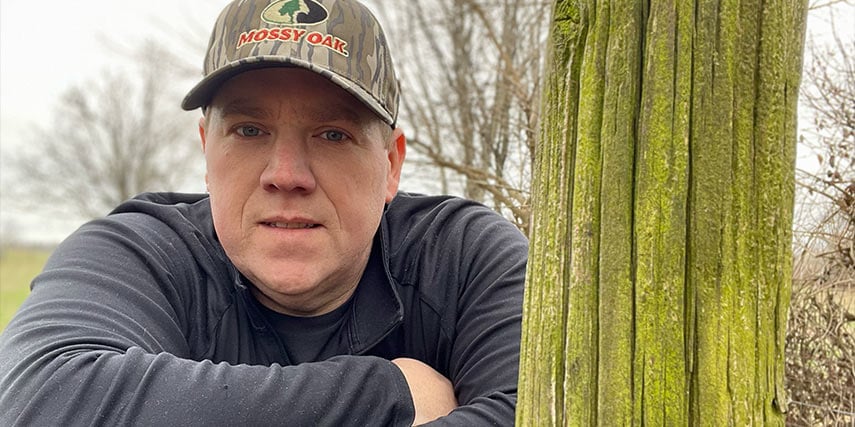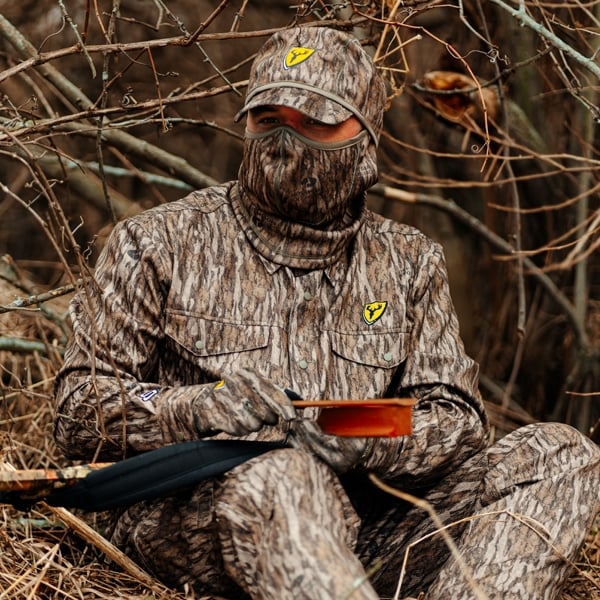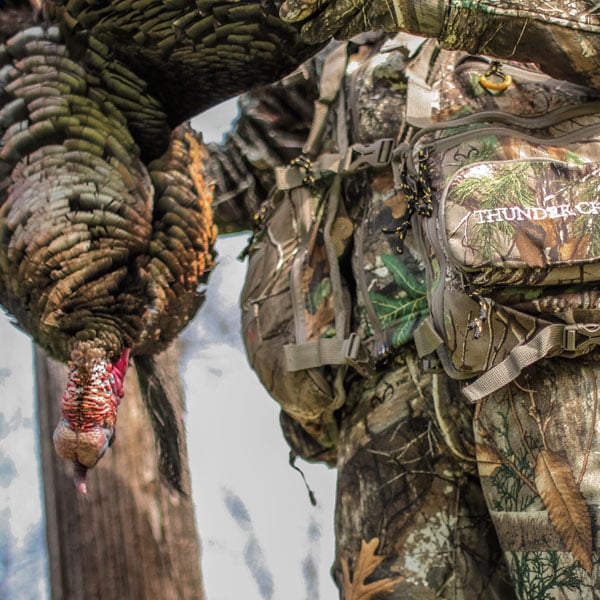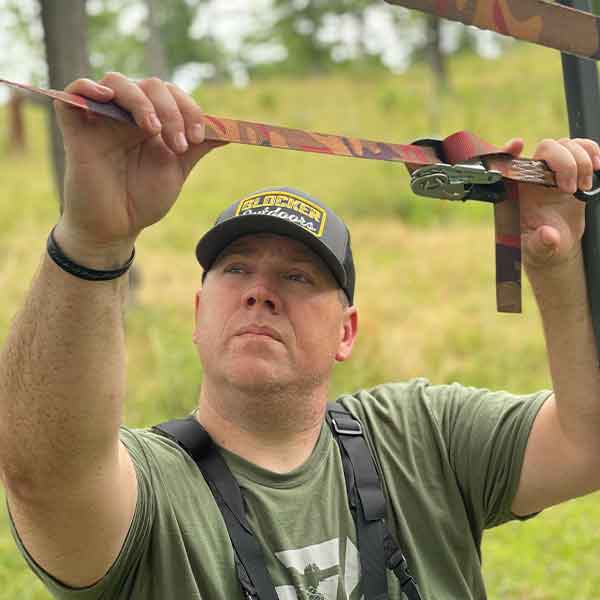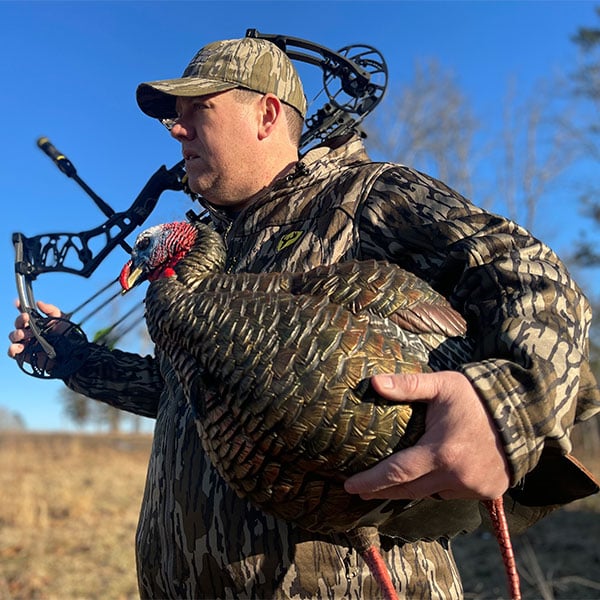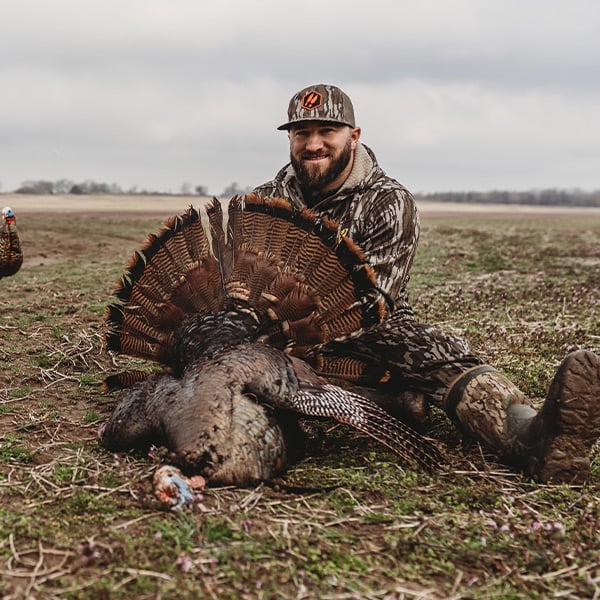In many states, the spring turkey season only lasts two or three weeks. The drastic and rapid changes that take place throughout this short timeframe amaze me.
One of the most drastic changes is the way your hunting area looks. In most locations, these changes happen quickly and are often noticeable from day-to-day. Perhaps you could see for several hundred yards on opening morning. Today, the area may be in full foliage, limiting visibility.
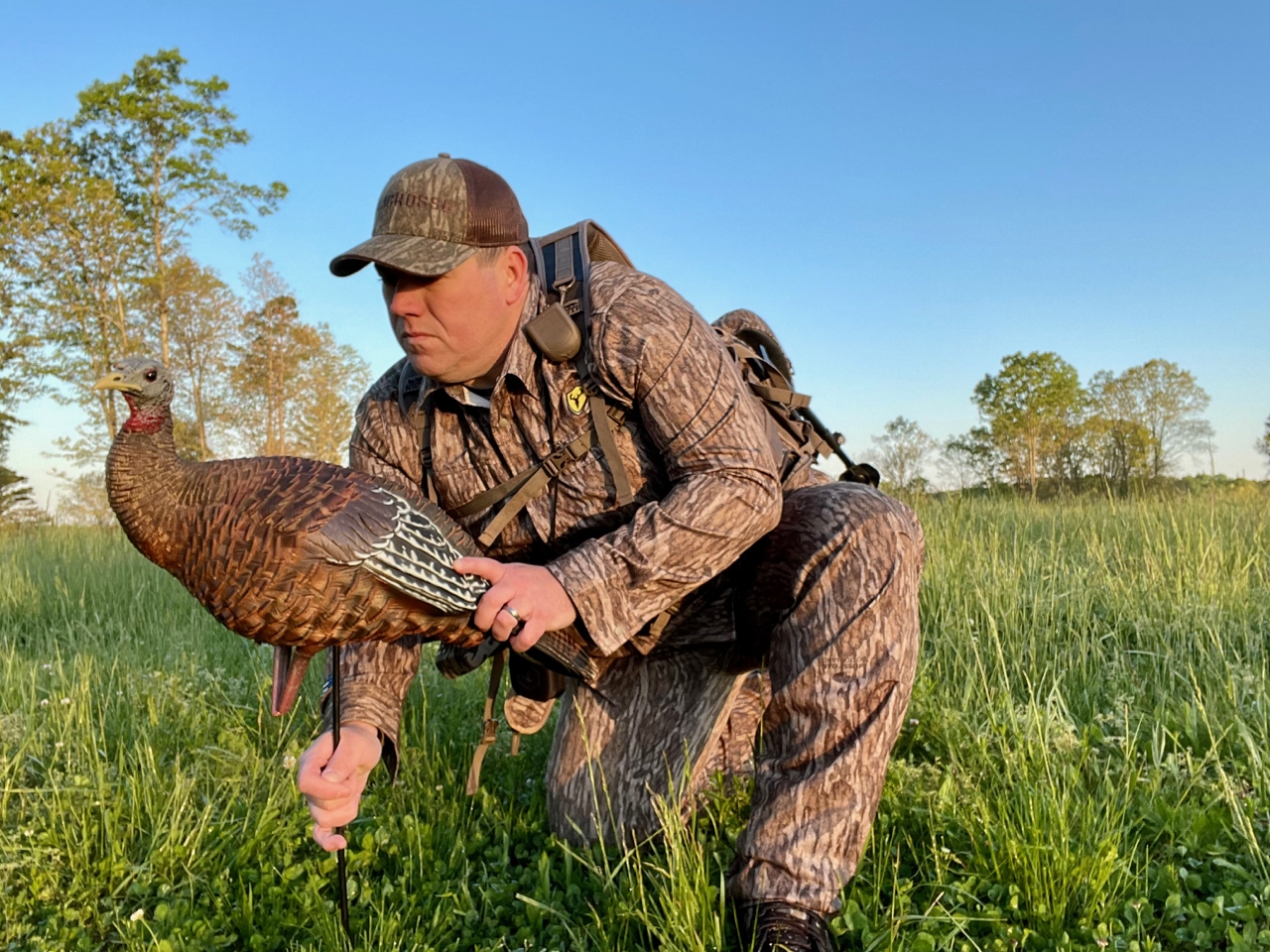
Another change from beginning to late season is the behavior of turkeys themselves. Toms have spent the first few days being pressured by every hunter with a turkey call within a 50-mile radius; they have also spent the last month fighting with other toms to establish dominance and determine who is going to breed hens first. To put it mildly, by the late season, toms are stressed out and often cautious of every move they make.
Late-season decoy setups are often a tense, uncertain and debated subject for turkey hunters. As mentioned earlier, by this point in the season, many gobblers have been fighting with other toms at some point. In some cases, they’ve had their butt whipped. This combined with likely encounters with hunters who tried to shoot their head off can cause mature toms to become skeptical of approaching a decoy setup. But don’t let this common, late-season fear find you leaving your decoys in the truck. With some careful thought, more strategic placement, and different calling regimens, your turkey decoys can still help you from ending the season with an unfilled tag.
Early in the season, a decoy setup is usually used to fool a gobbler into thinking he’s got a chance at breeding a hen. The typical setup often consists of a hen and either a jake or a strutting tom. When a gobbler sees this picture, he often comes in ready to fight. During the late season, however – as we’ve explained – his mood can change as quickly as the foliage.
Instead of coming in with boxing gloves on and swinging, toms can be more likely to avoid a scuffle because of fear of losing the battle. In some cases, toms will even spook from such a decoy setup and leave the area altogether.
To avoid the chance of running him off, use a low-key late-season decoy setup that is simpler, more subtle, and exhibits less dominance. Your goal is to simply to get his attention instead of bringing him in for a fight. During the late season, the only decoy I leave at the house is a full-strut gobbler. I’ll usually switch to a single hen decoy and occasionally a jake decoy to go along with her.
During the latter part of the spring, hens began to venture out in the fields or open areas by themselves, often getting up off a nest to do a little feeding or dusting. By using one lone-hen decoy, you are naturally replicating a turkey’s behavior. When a tom sees a lone hen, the curiosity builds as to whether she has been bred. Perhaps she’s looking for company.
Sometimes jakes have the same idea, so I may decide to place a jake decoy ten to 15 yards from the lone hen. On many occasions during the late season, I have had jakes respond to my calls and my lone decoy setup. The jakes show up in hopes of trying to get access to a hen who isn’t accompanied by a mature tom. When a single jake hangs around the hen decoy, it enhances the scene for any tom. Unlike a mature gobbler, a jake is an easy fight. Using the hen/jake combination makes it possible to appeal to that last bit of dominance in a mature gobbler in an unthreatening way.
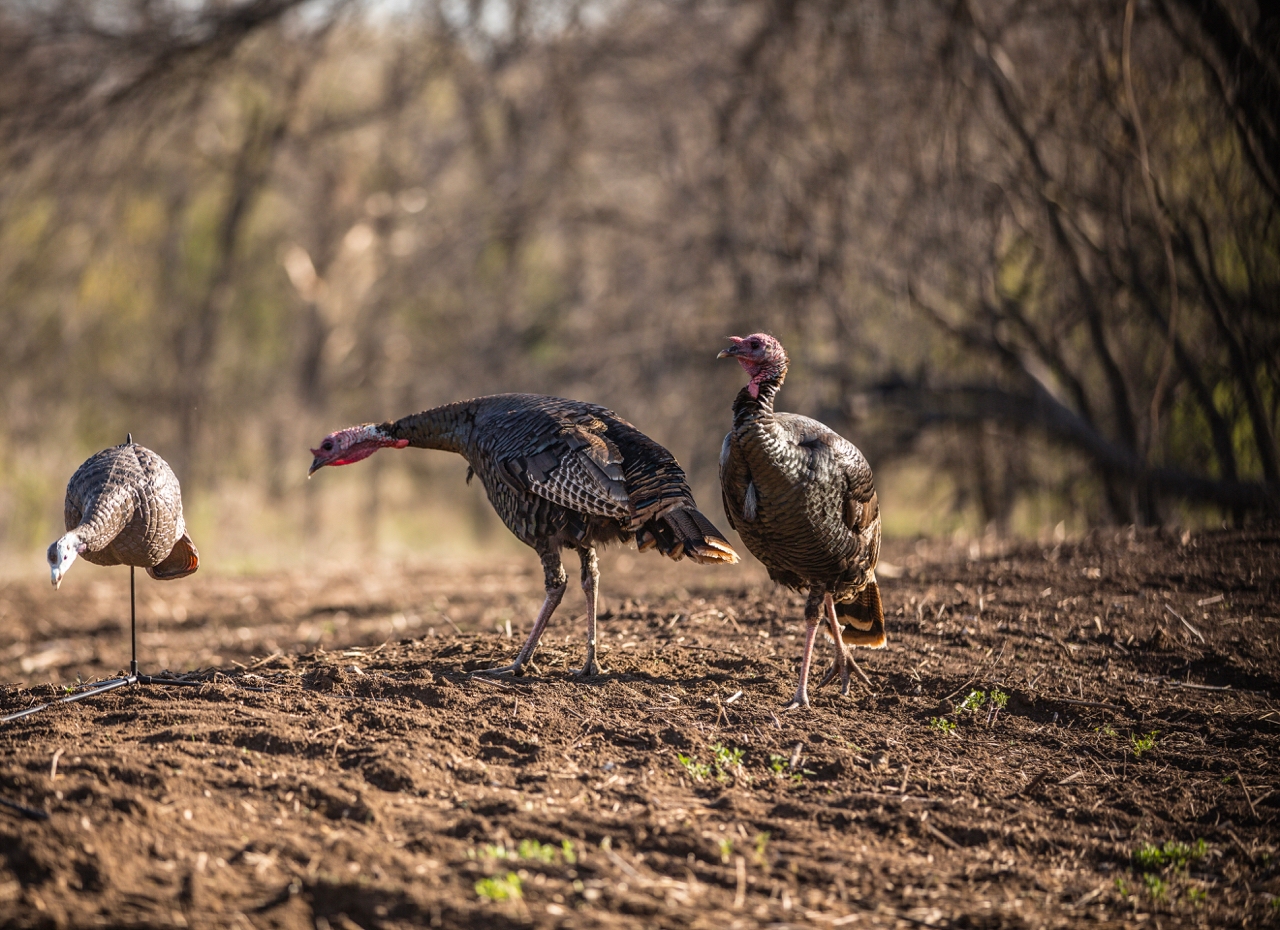
The next thing to remember when using decoys in the late season is to pay particular attention to where they are placed. Ground foliage has grown up just like the leaves on the trees; your decoys must be visible. We’ve all had toms come into the field we’re hunting and seemingly pay no attention to our decoys. When this happens, don’t overthink things; it’s usually because he simply didn’t see them. When a decoy is placed out in the grass, it may look visible from your vantage point, but it may not be to a turkey. In all situations, but especially the late season when grass at other vegetation is thick, try to place your decoy on a hill or rise where it’s most visible. If necessary, use taller decoy stakes to make them visible above the grass.
Once the decoys are in place and visible from a long distance, consider your calling style. Remember that gobblers have been pressured. Just like your modified decoy setup, late-season toms often respond better to more subtle calling, so tone it down.
Resist the urge to make and gobbler calls when a tom is slow to respond. Hearing another tom close to the hen can intimidate a late-season tom. Instead, use a few soft yelps sparingly. All you want to do is let a nearby tom know there is a hen out by herself. Call softly and only periodically. This is often just enough to build his curiosity and make him want to come to investigate.
Understand that “late season” does not mean a specific date or time of year, as hunting seasons are different across the country. But all states and all turkey-hunting ranges do have one thing in common: by the time the late season arrives, turkeys have been pressured and are on high alert. So, wherever you take to the field, combine a less intimidating low-key decoy setup with a softer, more subtle calling method for increased success in your late-season hunting.
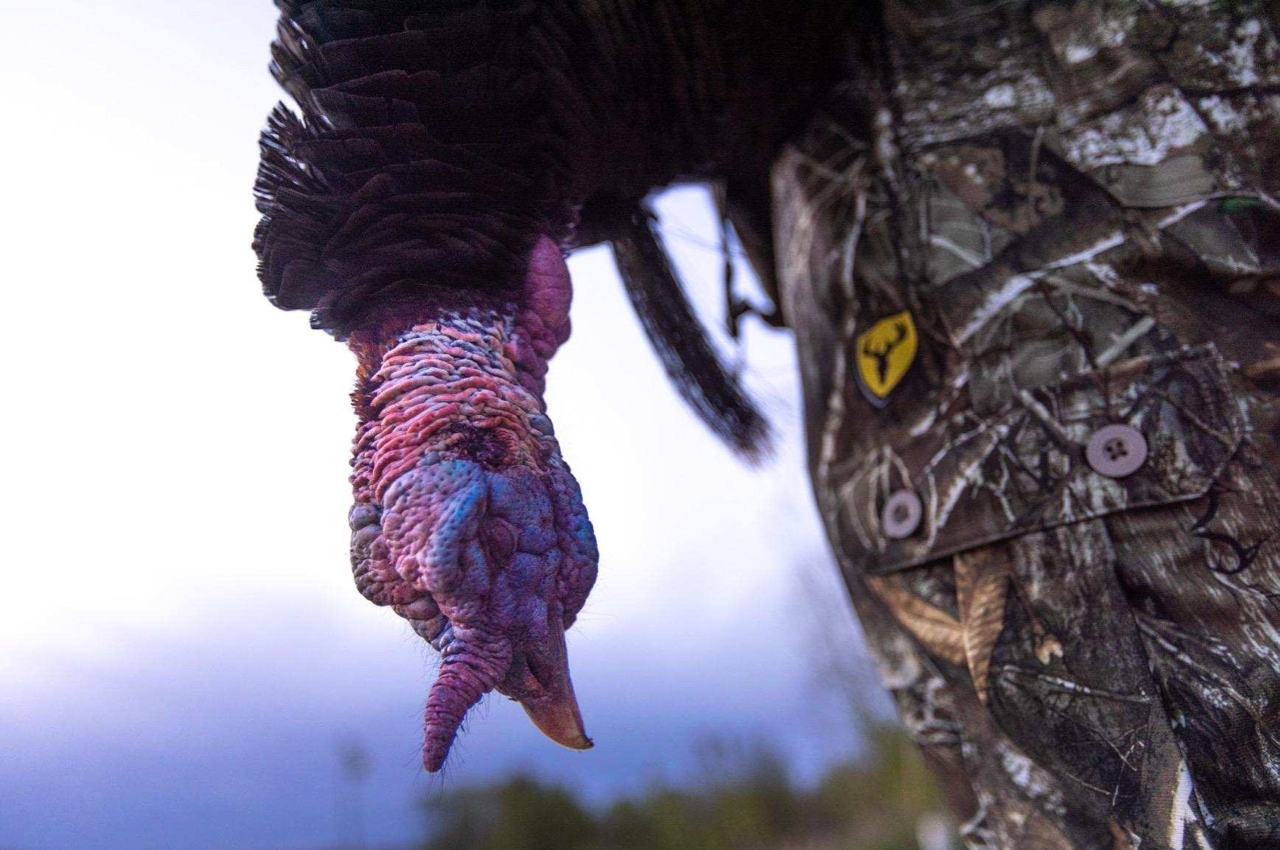
Photo by: Matt Addington

